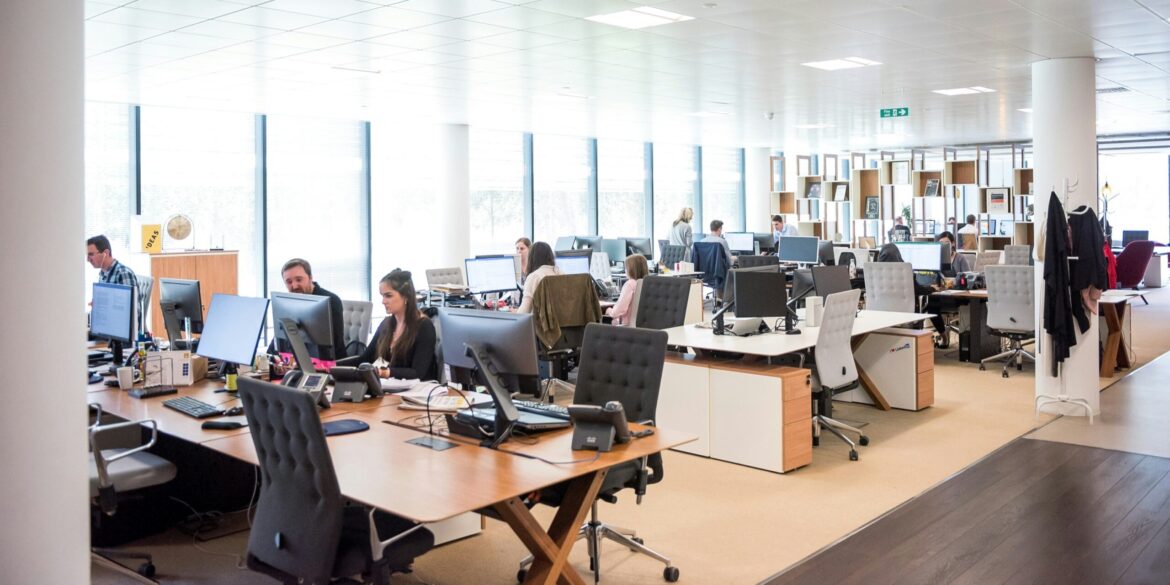NEW YORK, NY — As the global workforce adapts to the reality of hybrid and remote work arrangements, the commercial real estate market is experiencing a profound shift. Traditionally dominated by prime office spaces in metropolitan centers, the industry is now seeing a surge in demand for suburban office locations. This trend, which began gaining traction during the pandemic, has continued into 2025 as businesses seek more flexible, cost-effective, and employee-friendly office solutions.
According to recent data from CBRE, suburban office leasing activity in the first quarter of 2025 has increased by 15% compared to the same period last year. The surge comes as more companies recognize the benefits of allowing employees to work remotely part-time, while still maintaining physical office spaces that are more accessible and affordable than traditional urban locations. Companies are beginning to invest in suburban offices for several reasons, including lower rent costs, fewer traffic-related issues, and the desire to provide employees with a healthier work-life balance.
The shift toward suburban offices was initially prompted by the necessity of remote work during the height of the COVID-19 pandemic, but the trend has persisted even as restrictions have eased. For many organizations, the hybrid model—where employees split their time between home and the office—has proven to be effective in maintaining productivity while offering employees the flexibility they desire. As a result, many companies are now opting to move their offices out of city centers and into suburban business districts.
“Suburban offices are experiencing a resurgence because they offer more space at a lower cost,” says Sarah Dreyer, Senior Vice President at CBRE. “Businesses are increasingly looking for flexible office arrangements, and suburban locations offer just that. These areas also provide access to a skilled workforce, which is essential as companies try to attract and retain talent.”
Suburban office spaces are not just a consideration for small startups but also for large corporations, including tech firms, financial institutions, and healthcare companies. Major companies like Google and Ford have already moved parts of their operations to suburban areas in a bid to cut costs and attract workers who may be seeking an alternative to the high cost of living in metropolitan centers. Even prestigious financial firms are following suit. JP Morgan Chase and Goldman Sachs have both opened suburban campuses in recent months, signaling a growing trend among financial services companies to decentralize their office spaces in favor of more cost-effective alternatives.
Another contributing factor to the growing popularity of suburban offices is the rise of coworking spaces, which offer flexible leases, community-focused workspaces, and enhanced services for businesses of all sizes. While coworking has traditionally been concentrated in cities like New York, San Francisco, and Chicago, it is now rapidly expanding into suburban markets. WeWork and Regus, two of the largest coworking providers, are increasing their presence in suburban locations, providing businesses with flexible leasing options that cater to both remote and in-office employees.
The shift to suburban offices also aligns with the broader trend of companies embracing hybrid work models. According to a survey by PwC conducted in 2025, 65% of employers said they planned to maintain flexible work policies, allowing employees to work from home for part of the week. This flexibility has led to an increased demand for suburban office spaces that allow employees to commute shorter distances while still having access to collaborative, in-person work environments when necessary.
The increased demand for suburban office spaces is having a noticeable impact on the commercial real estate market. While suburban markets were once considered secondary to the urban core, they are now seeing increased interest from developers and investors who are capitalizing on this new trend. As companies move their offices to suburban locations, business districts in areas like Suburban New Jersey, Northern Virginia, and Orange County, California, are experiencing revitalization, with new office developments and modern amenities being added to attract businesses and workers.
Experts predict that this trend will continue throughout 2025 and beyond, as the hybrid work model becomes the norm for many businesses. While city-center office spaces may continue to be in demand, suburban markets are expected to remain an attractive option for companies seeking flexibility, lower operational costs, and a better work-life balance for their employees.


